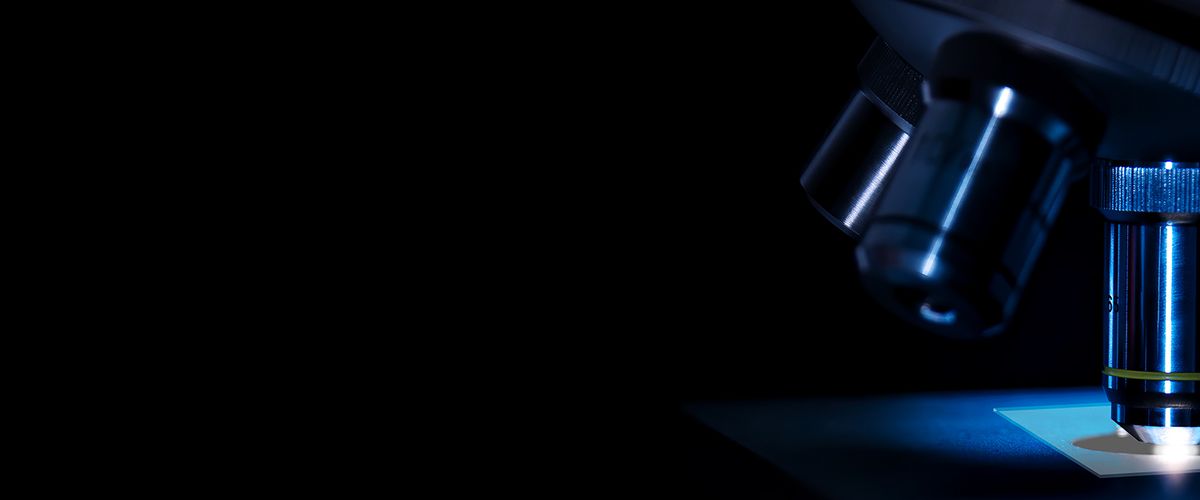Going Deeper
by A.J. Kleber
Professor Ji-Xin Cheng, a pioneer in medical optics and engineering several times over, has been awarded a $2.8M 5-year NIH MIRA grant renewal to continue his push to realize the full potential of vibrational photothermal (VIP) microscopy – building on myriad advances across 42 peer-reviewed articles, 16 patent applications, and a variety of prototypes and collaborations. This trailblazing technology, in turn, has the potential to enable substantial clinical breakthroughs, enriching our knowledge of molecular biological functions and providing insights which could lead to fresh diagnostic and treatment approaches for diseases such as cancer.
Label-free imaging
The Cheng Research Group has pioneered several types of advanced, bond-selective vibrational microscopy techniques, which are able to differentiate between different chemical compounds in cells without the use of fluorescent dye labeling. Though useful for certain types of investigation, fluorescent tags can interfere with the chemical makeup of samples, among other limitations. By contrast, Cheng’s vibrational microscopy methods use carefully applied lasers to stimulate minute molecular reactions which allow for extremely sensitive, fast, highly multiplexed imaging with low signal-to-noise ratios (SNRs). In particular, his lab has made significant progress with stimulated Raman scattering (SRS) microscopy and mid-infrared photothermal (MIP) microscopy.
Progress and promise
Over the previous five years, Cheng’s lab has utilized their ever-evolving and advancing technology to image metabolites in live tumor cells and intact biopsies and visualize the chemical content of a single viral particle, among other feats. But as Cheng himself points out, there is still considerable work to be done for vibrational imaging to reach its potential; for example, both SRS and MIP microscopy are currently not able to provide high-resolution images of biomolecules in a deep-tissue environment. At present, most vibrational imaging applications focus on molecules in high concentrations, such as lipid droplets, or protein aggregates in cultured cells or thin tissue slices.
Further, deeper, faster
In the abstract for this new phase of research, Cheng lays out some concrete goals based on previous milestones. He plans to begin by developing several new devices to advance a technique which combines some of the strengths of both SRS and MIP microscopy, termed stimulated Raman photothermal (SRP) microscopy, following up on a demonstration published in Science Advances in 2023. Another goal will be to build on a 2024 pilot demonstration of another vibrational photothermal microscopy technique, published in Nature Photonics, which shows promise for high-resolution deep-tissue imaging. Ultimately, collaboration with colleagues in the life sciences will allow the researchers to demonstrate “paradigm-shifting” applications of VIP, such as “fingerprinting” intracellular organelles (tiny, specialized subunits of cells), imaging the metabolic activity of small biomolecules, developing tools to study the operation of proteins in live cells and living organisms, and more.
Cheng isn’t shy about his ambitions for the technology, especially after years of successful advancements. “I hope that this award will help us decode the chemistry of life in the next five years!”

Ji-Xin Cheng is the inaugural Moustakas Chair Professor in Optoelectronics and Photonics, with a dual appointment in Electrical and Computer Engineering and Biomedical Engineering. A fellow of Optica and AIMBE, some of his recent accolades include the Raman Award for Most Innovative Technological Development, the ACS Division of Analytical Chemistry Spectrochemical Analysis Award, and the SPIE Biophotonics Technology Award, all in 2024. He delivered the 2024 College of Engineering Charles Delisi Distinguished Lecture, and was the 2022 Boston University Innovator of the Year.
